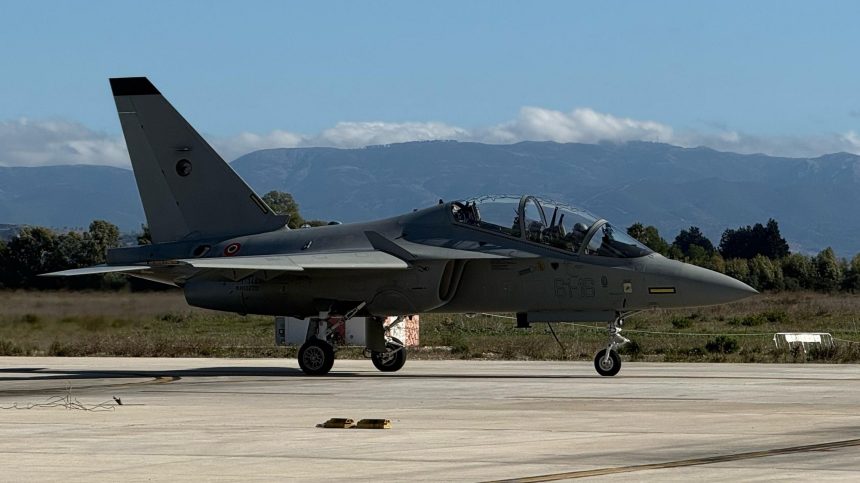Ten U.S. students are now enrolled at the International Flight Training School to complete a 133-day Basic Jet Training course in the T-346A Master.
Following an agreement with the Italian Air Force in August 2025, the U.S. Air Force is now training ten of its student pilots at the International Flight Training School (IFST), Decimomannu Air Base, Italy. The two services have partnered to execute an undergraduate flying training program Small Group Tryout, which will test modernized syllabi and streamlined training timelines with the goal of reducing pilot certification to less than one year.
Training in Italy
As part of the “Concept of Operations (CONOPS) for Flight Training of the USAF Military Personnel in Italy,” the IFTS was chosen for its proven excellence and ability to offer an innovative and challenging training program, with the Leonardo T-346A jet trainer defined as a further strength behind this agreement.
The students first attended civilian flight school-led Initial Pilot Training in the U.S. While in Italy, they are attending a 133-day Basic Jet Training course in the T-346A Master jet trainer will allow them to earn their U.S. Air Force pilot wings.
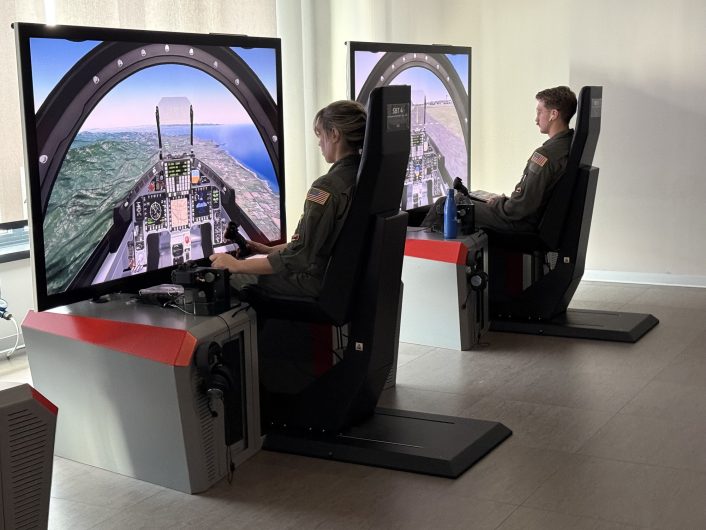
The two services worked together on the development of training program, structured around the “Multiphase Jet Training Integrated Syllabus.” Flights of U.S. students on the T-346 are already ongoing.
Following graduation, the students selected for fighter roles will stay at Decimomannu for an additional 135-day T-346 advanced training course before progressing to U.S. fighter formal training units. The remaining students will train stateside in mobility, special operations, or command and control platforms.
The program is expected to last approximately nine months and will conclude in June 2026. The U.S. Air Force said the training in Italy will provide AETC with valuable lessons to refine the pilot training pipeline and fully leverage the capabilities of the T-7A.
Preparing for the T-7
The initiative has a second goal as the U.S. Air Force prepares to introduce its new jet trainer. In fact, the first T-7A Red Hawk aircraft is set to arrive at Joint Base San Antonio-Randolph, Texas, in early December.
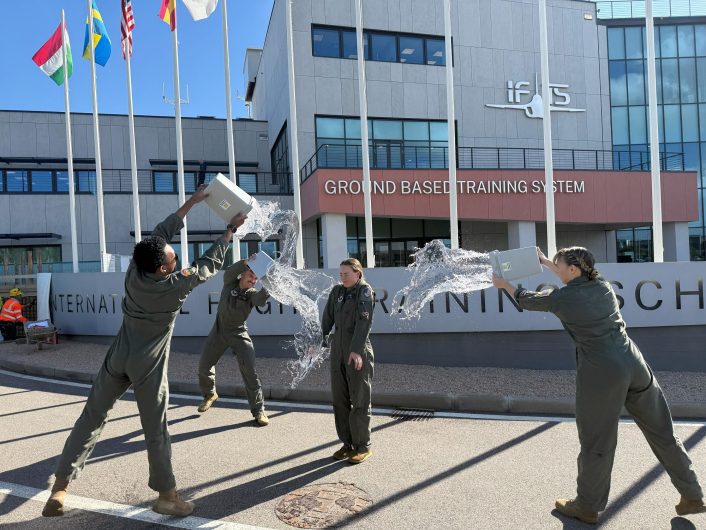
“This initiative is expected to provide valuable data for optimizing pilot training methods as we prepare to ramp up the T-7A,” said Col. Corey Hogue, Capability Requirements Division Chief, Air Education and Training Command. “Not only will we gather data on the effectiveness of our proposed syllabus, but we can also validate the feasibility of sending trainees directly from IPT to train in a modern training aircraft, like the T-7A Redhawk.”
Hogue’s statement refers to the fact that these ten students progressed directly from civilian-instruction IPT to fast-jet training. As confirmed by the press release, this is the first such instance of students using a single military trainer, instead of a first phase on the turboprop T-6 Texan II and then a jet trainer.
The new undergraduate pilot training program aims to produce 1,500 new pilots annually by streamlining the pipeline for combat aircraft from the current 528 days to approximately 364, explains the U.S. Air Force. This exchange in Italy is being used as an opportunity to assess its feasibility.
Additionally, the training in Italy will help define potential roles for the T-7A in future pilot training pipelines, says the U.S. Air Force. This includes assessing performance metrics for optimization, comparing training outcomes across platforms, and evaluating advanced simulation capabilities for integration into real-world training scenarios.
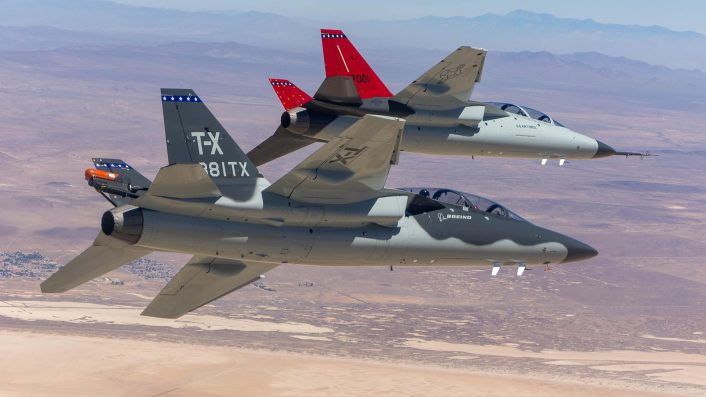
The service noted that this initiative is not isolated, but it is in coordination with Formal Training Units. The goal is to increase the throughput of pilots advancing to their assigned operational platforms, while at the same time enhancing the overall quality and readiness of Airmen entering the force.
International Flight Training School
The International Flight Training School project was announced in 2018 at the Farnborough Airshow, when the letter of intent was signed by the ItAF chief of staff and the CEO of Leonardo. Based at Decimomannu AB, the school covers the Phase IV training, or Lead-In Fighter Training, with the T-346A.
As part of the IFTS, the ItAF has the lead for the management of the operational requirements and of the operations, as well as the upkeep of the quality standards of the flight school. The ItAF is also in charge of the management of the training syllabus, the training of the instructors and the quality control of the exit level of the students.
Leonardo is in charge of the investments for the creation of the school with aircraft and simulators of the latest generation and new ground infrastructures, as well as the operations’ support with technicians that will side with the military personnel. The new campus in Decimomannu takes full advantage of the Sardinian training infrastructures already used for years by the Italian military.
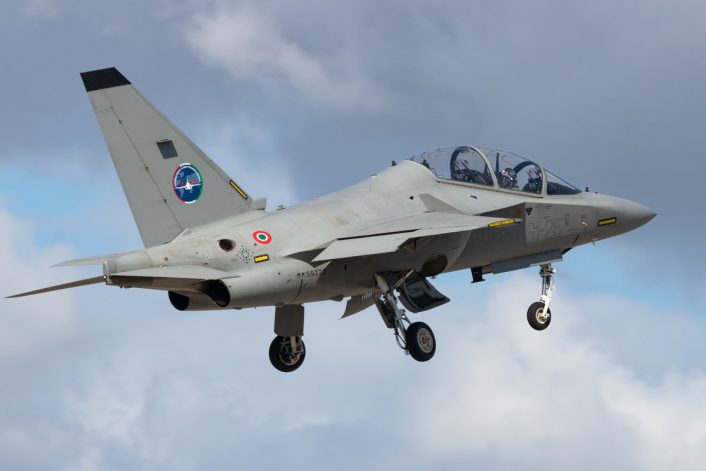
An entire building is dedicated to the Ground Based Training System (GBTS) facilities, with latest-generation simulation systems, inclusive of two Full Mission Simulators and three Part Task Trainer synthetic simulators for emergency management training modules and more advanced training missions, as well as classrooms and offices.
Leonardo and CAE, through the joint venture “Leonardo CAE Advanced Jet Training”, provide technical-logistic support to the International Flight Training School, including full maintenance and operation of the M-346 aircraft and its Ground-Based Training System, as well as operation of IFTS base facilities. The integrated support optimizes the management of fleets and simulators for maximum operability, including the advanced full-mission simulator jointly developed by Leonardo and CAE.
The IFTS has already become internationally renowned, throughout its first years of operations, as one of the most advanced and state-of-the-art flight schools for the training of future fighter jet pilots. The school is now an international reference for Advanced LIFT to better prepare pilots that will fly on front-line fighters of 4+ and 5th gen, like the Eurofighter Typhoon and the F-35.
The IFTS students are followed throughout their training by a team of 40 instructors, both military and civilian, while flying more than 8,000 flight hours per year on the M-346 Master and as many in the advanced flight simulators, for about a 1:1 ratio between real and simulated flight hours. The school exploits the ItAF’s extensive know-how in the training sector and the national industry’s excellence in the integrated training systems.

